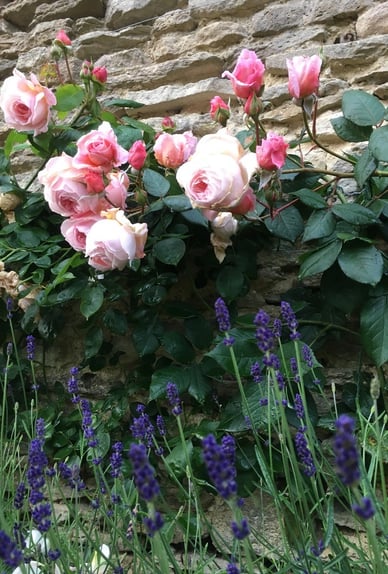In the garden
Botanical painters will aim to collect the core information about a plant in its natural habitat - overall form, colour, habit. The detailed work will usually take place in the studio, with specimens to hand.
Botanical painting is not really a 'plein air' discipline, as the requirement for exactness dictates a more stable, quiet environment than a garden, with all its distractions and weather. But it's an excellent place to start, where the artist can develop a sense of the plant in its natural environment. And examining the plant as a whole gives a sense of the character of the plant, including atypical elements that should be avoided.
A couple of hours spent sketching and colour matching will pay off.
It's a great advantage to have a botanist or horticulturalist as an adviser, or an experienced gardener.
Plants are complex, and having spent many hours on a piece, one doesn't want to find out after completion that the specimen chosen was atypical in some way.
Get as comfortable as you can, knowing that fine work can all be completed indoors in due course.


Fortunate botanical artists may have a garden of their own, which is a wonderful asset and allows for planning of paintings in forward years.
Vegetable gardens, fruit trees, annuals and perennials all provide wonderful material for the painter. And importantly, layers of it. It usually takes several specimens to complete a painting.
But for those who do not, there are opportunities aplenty in public gardens. Setting up in a garden for painting does not have to be complex. But comfort and allowing for sufficient focus on the task at hand are important.
Bringing the simplest of tools - sketchbook, pencils, a basic set of watercolour pans for accurate colour matching - is the key. Too much encumbrance can be distracting and discouraging.



